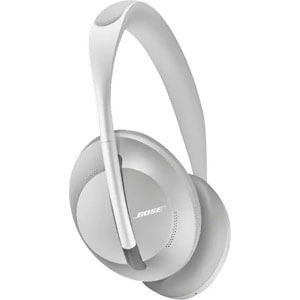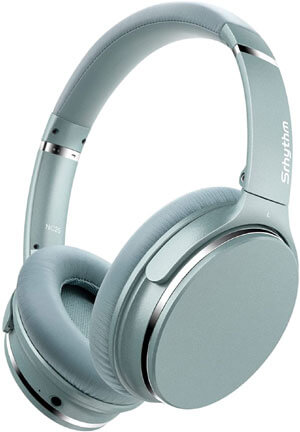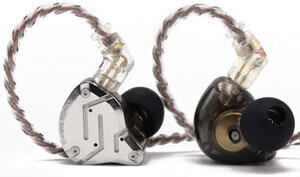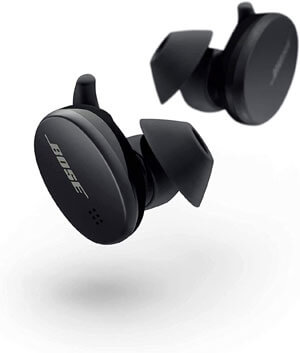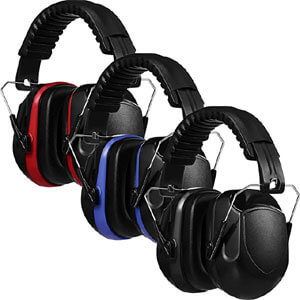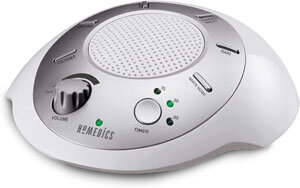How to Soundproof Your Writing Room
The Symphony of Distraction:
a writer's guide to quieting the chaos
and creating your very own cocoon of silence
A (Quiet) Room of One's Own

What's Your Noise Tolerance Level?
Soundproof Your Muse: How to Create the Peace and Silence You Need – so you can focus and write
It's a cacophonous world out there, and whether we like it or not, noise has become an inescapable part of our daily lives. In this pulsating era of information overload and non-stop connectivity, we've come to accept the background hum of our cities as just another aspect of modern life. But have you ever stopped to consider how specific noises or types of noises break your focus and affect your well-being and productivity?
In the realm of creative writing, one size does not fit all—especially when it comes to noise. As a writer, your ability to concentrate and maintain focus is paramount, making it essential to understand your unique reactions to different noises. Next, we'll guide you through the process of identifying the types of noise that affect you the most and teach you how to measure your noise levels. By knowing which noises break your concentration, you'll be well on your way to crafting the perfect sanctuary for your creative endeavors.
1. Identifying Distracting Noises
First you need to identify the types of noise that affect you the most. Start by paying attention to your surroundings, and take note of the noises that seem to disrupt your focus or mood. Here are some common culprits:
Household Noise: Voices, laughter, talking, crying, yelling, or shouting from family members or roommates can be particularly difficult to tune out, screaming children playing, laughing, or crying, television or movie sounds from other rooms, sounds of gaming, video conferencing, or virtual meetings from other rooms, the beeping of your smartphone, a ringing phone, a text message alert, the whirring of your computer fan, appliances, plumbing, hvac systems and other gadget-generated disturbances can create an underlying hum that affects your concentration, appliances like refrigerators, microwaves, or blenders, the sound of running water from nearby bathrooms or kitchens, alarms, beeps, or notifications from devices like smoke detectors, home security systems, or kitchen timers, home repairs like drilling, hammering, sawing, a doorbell ringing, doors opening and closing, household repairs or maintenance sounds like drilling, hammering, or sawing, the sound of dishes or utensils clanking together, loud footsteps from family members or roommates, vacuuming or other cleaning sounds, music or singing from other rooms, barking dogs, cats that will not stop meowing, screeching parrots, footsteps from family members or roommates, sounds of other household members exercising, practicing musical instruments, or doing hobbies in nearby rooms.
Outdoor Noise: Outdoor noise can be a constant nuisance to some writers: The ever-present hum of traffic, lawn mowers, leaf blowers, snow blowers, snow shoveling, hammering, power tools, construction sites, factories, garbage trucks, delivery trucks, fire engines, police sirens, honking horns, traffic, airplanes, trains, sounds from nature, like rain, wind, or birds, can either be soothing or distracting depending on your preferences.
2. Negative Effects of Noise Pollution
Noise pullution has negative effects on health and productivity:- Hearing loss: Prolonged exposure to noise pollution can lead to hearing loss or impairment.
- Hypertension: Noise pollution can cause an increase in blood pressure, which can lead to hypertension and other cardiovascular diseases.
- Sleep disturbance: Noise pollution can cause sleep disturbance, which can lead to fatigue, irritability, and reduced work performance.
- Cognitive impairment: Noise pollution can affect cognitive function, including memory, attention, and learning.
- Reduced work performance: Noise pollution can reduce work performance by causing distractions, decreasing concentration, and increasing errors.
Take note of the noises that bother you the most and consider how you might minimize their impact on your writing space.
3. Measuring Your Noise Levels
To quantify the cacophony around you, we recommend using a free online sound level meter or a smartphone app, such as NIOSH SLM or Sound Meter, which can measure the decibel levels (dB) of your environment. Keep in mind that the World Health Organization recommends an indoor noise level of 35 dB for optimal concentration. Measure the noise levels in your writing space during various times of the day to get a better understanding of your noise profile. To give you an idea of the noise spectrum, here are some examples of decibel levels for common sounds:
- 30 dB: A quiet whisper
- 60 dB: Normal conversation
- 80 dB: Busy city street
- 100 dB: Power tools
- 120 dB: Live rock concert
Armed with your trusty sound level meter, measure your environment during different times of the day and in various locations. Keep a log of your findings, and don't forget to include subjective notes about how these noise levels affect you.
- Noise sensitivity: Are you easily bothered by certain sounds, or do you have the ability to tune out the racket? Recognize your own sensitivities, and be honest with yourself about your limits.
- Noise preferences: Some people find solace in the buzz of a coffee shop, while others prefer the hush of a library. Identify the environments that help you focus and feel at ease.
- Noise adaptation: How well can you adapt to changing noise levels? Do you find it easy to acclimate to new environments, or do you struggle to find your footing in the face of auditory upheaval?
4. Quiet Time Quick Tips
Once you've identified your noise triggers and measured your noise levels, it's time to adapt your writing environment to suit your needs and create your ideal sonic landscape. Consider the following strategies to help you achieve auditory bliss:
- Choose the right space: Select a room in your home that's naturally quieter, ideally one with minimal exposure to street noise and household sounds.
- Soundproof your writing space: Simple solutions like soundproof weatherstripping, adding soundproof rug pads, acoustic panels, or heavy soundproof curtains to reduce noise transmission and sealing gaps in windows and doors (soundproof door sweep) can make a significant difference.
- Create a routine: Schedule your writing sessions during the quietest times of day, or consider using earplugs or headphones to block out noise.
- Embrace white noise: A white noise machine or app can help mask unwanted sounds, creating a soothing backdrop for concentration or relaxation.
- Noise-cancelling headphones: Invest in a high-quality pair to block out unwanted sounds and immerse yourself in your own curated soundtrack.
- Mindfulness and meditation: Regular practice can help you become more aware of your internal noise, allowing you to develop strategies for quieting the mental chatter and finding tranquility within the din.
5. With A Little Help From My Friends
Finally, don't forget the importance of communication and collaboration in managing noise levels. Share your discoveries with friends, family, and colleagues to foster a supportive environment where everyone's noise needs are respected. This may include:
- Establishing "quiet hours": Designate specific times of day when noise levels should be kept to a minimum, allowing everyone in your household or office to focus or unwind.
- Creating designated workspaces: Dedicate specific areas for quiet work, group collaboration, and socializing, to accommodate a range of noise preferences and sensitivities.
- Encouraging open dialogue: Foster a culture of empathy and understanding by encouraging everyone to express their noise concerns and preferences without fear of judgment.
In the cacophonous world we live in, understanding your noise tolerance is essential to finding harmony amidst the chaos and a crucial step toward cultivating a writing space that fosters focus and creativity. By identifying your noise triggers, preferences, and adaptation skills, measuring your noise levels, and adapting your environment accordingly, you'll be well-equipped to craft your own sonic sanctuary and you'll be well on your way to conquering the cacophony and achieving your creative potential. In doing so, you'll unlock the power to create a writing haven that is truly tailored to your needs.

DIY Ear Plugs and Earbuds
Budget-Friendly Noise Busters for the Creative Writer
Ah, the cacophony of modern life. From the relentless hum of city streets to the intrusive buzz of technology, it seems there's no escaping the noise. In an era where privacy is at a premium, finding solace in silence is a rare luxury. Enter the unsung heroes of the writing world: ear plugs and earbuds, the designer ensembles of the auditory world. These small, portable devices are perfect for writers who crave an affordable and customizable noise-blocking solution.
Ear plugs are a simple yet effective way to block out noise. While store-bought options abound, making your own ear plugs allows you to create a custom fit and adjust the level of noise reduction. Follow these steps to make DIY ear plugs:
How to: DIY Foam Ear Plugs
The classic foam ear plug has earned its reputation as a reliable, affordable, and convenient noise-blocking solution. To create your own, you'll need:
- Memory foam
- A sharp knife
- A ruler
- A cylindrical mold
- Measure and cut a small strip of memory foam, approximately 1 cm wide and 2.5 cm long.
- Roll the strip into a tight cylinder using the cylindrical mold.
- Gently taper one end to create a comfortable, snug fit.
- Voilà! Your very own custom foam ear plugs.
How to: DIY Silicone Ear Plugs
The Silicone Savior – A Haute Couture Twist: For those seeking a more tailored fit, silicone ear plugs are a stellar option. They can be molded to the contours of your ears, ensuring maximum comfort and noise reduction. To create your own silicone ear plugs, you'll need:
- Moldable silicone putty
- A small, clean surface
- Knead the silicone putty until it reaches a pliable consistency.
- Roll the putty into a ball and press it firmly into your ear, ensuring a tight seal.
- Allow the putty to set for the recommended time, then gently remove the ear plug.
- Revel in the satisfaction of your personalized silicone ear plugs.
How to: DIY Earbuds
A Symphony of Silence – DIY Earbuds: The pièce de résistance: DIY earbuds, a fusion of functionality and style that's perfect for those who prefer music to fill the void left by ambient noise. While earbuds are typically associated with music listening, they can also serve as a noise-blocking solution when combined with custom ear tips. Here's how to create your own DIY earbuds with noise-isolating tips – you'll need:
- A pair of budget earbuds
- Foam or silicone ear tips
- A hot glue gun or super glue
- Decorative elements (beads, gems, charms, etc.)
- Remove the stock ear tips from the earbuds.
- Select foam or silicone ear tips that fit comfortably in your ears and attach them to the earbuds.
- Apply a thin layer of glue to the outer surface of the ear tips.
- Embellish your earbuds with the decorative elements of your choice, creating a unique, couture-inspired look.
DIY Storage Solutions
Of course, your bespoke ear plugs and earbuds deserve a suitably stylish home. Keep them safe, clean, and tangle-free with these DIY storage ideas:
- Repurpose a vintage pillbox or mint tin to create a compact, fashionable storage case.
- Craft a simple drawstring pouch from velvet or satin for a touch of opulence.
- Upcycle an old sunglasses case, lining it with soft fabric to protect your auditory accessories.
Caring for Your Custom Creations
To ensure the longevity of your DIY ear plugs and earbuds, follow these care tips:
- Clean your ear plugs with a gentle soap and water solution after each use. Allow them to air dry before storing.
- Avoid exposing your ear plugs and earbuds to extreme temperatures, as this may cause damage.
- Untangle your earbuds gently to prevent wire damage, and store them in a protective case when not in use.
With these tips in mind, your DIY ear plugs and earbuds will remain functional, fashionable, and fabulous for years to come.
By crafting your own ear plugs and earbuds, you'll not only save money but also create a personalized noise-blocking solution tailored to your unique ears. Experiment with different materials and shapes to find the perfect combination for your creative writing environment. With the right DIY ear plugs or earbuds in place, you'll be one step closer to achieving the focus and concentration necessary for your literary endeavors.
Embrace the world of DIY noise-blocking solutions and revel in the freedom they offer. With a little creativity and resourcefulness, you can create the perfect auditory sanctuary that supports your writing process. Now, armed with your customized ear plugs and earbuds, let your imagination soar and your words flow freely.
Noise-Cancelling Headphones – The High-Tech Solution for Focused Writing Inside of Your Own Personal Soundproof Bubble
In the bustling age of information and urban sprawl, finding a moment of respite from the clatter of daily life is akin to discovering an oasis in the desert. One such oasis comes in the form of noise-cancelling headphones, a godsend to audiophiles, busy professionals, and the noise-sensitive alike.
As a creative writer, you know that silence is golden. Enter noise-cancelling headphones, the high-tech solution to all your auditory woes.
1. Active vs. Passive Noise-Cancelling Headphones
First, let's discuss the two primary types of noise-cancelling headphones:
(ANC) Active Noise-Cancelling Headphones: These headphones use a more advanced technology that generates "anti-noise" to counteract external sounds, effectively neutralizing them before they reach your ears. They employ built-in microphones to detect ambient sounds and generate inverse sound waves that cancel out the unwanted noise. This wizardry allows them to block out a wider range of frequencies than their passive counterparts.
-
Pros:
- Superior noise-cancelling performance
- Greater comfort and fit
- Often feature additional perks, like Bluetooth connectivity
-
Cons:
- Higher price tag
- Require batteries or charging
- Some models may introduce a slight hiss when noise-cancelling is active
Passive Noise-Cancelling Headphones: Also known as noise-isolating headphones, these rely on physical insulation to block out external sounds, often featuring thick padding and a closed-back design that covers your ears. They don't use any electronic components to cancel out noise actively. Think of them as high-tech earmuffs.
-
Pros:
- Generally more affordable
- No need for batteries or charging
- Simple, straightforward design
-
Cons:
- Less effective at blocking low-frequency noise
- Bulkier and less comfortable than active models
- Sound quality may suffer due to the emphasis on noise isolation
2. Review: Bose Noise-Cancelling Headphones
Let's take a closer look at one of the most popular options on the market: Bose noise-cancelling headphones. Here's our personal review, complete with pros and cons:
-
Pros:
- Works decently: The noise-cancelling aspect of Bose headphones effectively blocks out external noise.
- Versatile: You can wear them even when you're not listening to music.
- White noise compatibility: Pairing them with white noise creates a cocoon of silence that's perfect for focused writing.
- Comfort: Known for their comfort, Bose headphones are designed for extended periods of wear.
-
Cons:
- Expensive: Bose headphones come with a hefty price tag, making them a significant investment, and potentially putting them out of reach for some writers.
- Bulky: While comfortable, these headphones can be quite large and conspicuous.
- Warm ears: The headphones may cause your ears to feel hot, which could be uncomfortable during longer writing sessions.
- Fashion vs. function: The struggle is real when attempting to don a hat and Bose headphones simultaneously.
- Connectivity issues: Connecting and maintaining a stable Bluetooth connection with a desktop computer can be a frustrating experience, as the Bose voice constantly beeps and plays an annoying alert that it's attempting to connect to your computer. Resist the urge to rip the thing into little pieces, it's too expensive to keep replacing!
3. Which Noise-Cancelling Headphones Are Best for You?
Before investing in noise-cancelling headphones, consider the following factors to ensure you choose the best option for your needs:
- Budget: Determine your budget and look for models within your price range. While Bose headphones are on the higher end, there are more affordable options available.
- Comfort: Prioritize comfort, especially for extended writing sessions. Look for headphones with soft padding and adjustable headbands.
- Battery life: If you opt for active noise-cancelling headphones, ensure they have a long battery life to avoid interruptions during your writing sessions.
- Connectivity: Consider whether wired or wireless headphones are more suitable for your setup. If you choose wireless, research models with reliable Bluetooth connections.
- Style: Choose between over-ear or on-ear designs based on your personal preferences.
Noise-cancelling headphones have the potential to revolutionize your writing environment, providing you with the auditory sanctuary that you crave amidst the chaos. By understanding the different types of noise-cancelling headphones and considering your specific needs, whether it's comfort, price, or the ability to create a cocoon of silence, you can make an informed decision about whether to invest in this high-tech solution. No pair of headphones is perfect, and some trade-offs may be necessary to find the ideal balance between noise-cancelling performance, comfort, and connectivity. With the right pair of headphones, you'll be free to immerse yourself in your creative world, undisturbed by the cacophony of life around you. Embark on your quest for the ultimate noise-cancelling headphones with a discerning ear and an open mind. By doing so, you'll be one step closer to crafting your perfect sonic sanctuary and conquering the cacophony of the modern world.
Over-Ear Headphones – The Sound Fortress for the Creative Writer
For creative writers, finding solace amidst the symphony of noise that bombards us daily is nothing short of essential. In the quest for aural refuge, over-ear headphones have emerged as a fashionable and practical solution for those who prefer to cocoon themselves in sound rather than silence.
1. Types of Over-Ear Headphones
Broadly speaking, there are two primary categories of over-ear headphones:
- Closed-back Headphones: These headphones feature sealed ear cups, which not only help isolate sound but also prevent sound leakage. This makes them ideal for writers seeking an immersive experience and minimal disturbances to others nearby.
- Open-back Headphones: In contrast, open-back headphones are designed with perforated ear cups, allowing air to pass through and creating a more natural, spacious sound. While they don't block noise as effectively as closed-back headphones, they offer superior sound quality and are perfect for writers who want to maintain some connection to their environment.
2. Which Noise-Cancelling Over-Ear Headphones Are Best for You?
When selecting the ideal pair of over-ear headphones, consider the following factors:
- Comfort: Comfort is paramount, as you'll likely be wearing your headphones for extended periods during writing sessions. Look for headphones with plush ear cups and an adjustable headband.
- Sound quality: While you may not be seeking noise-cancelling headphones, sound quality is still crucial. Opt for headphones with a wide frequency range and a balanced sound signature for an immersive experience.
- Build quality: A well-built pair of headphones should last for years, so look for robust materials and solid construction.
- Portability: If you're a writer on the go, consider lightweight headphones with a foldable design for easy transportation.
- Price: Over-ear headphones come in a wide range of prices, from budget options to high-end models. Determine your budget and weigh the features and benefits of each pair accordingly.
3. Best Over-Ear Headphones Recommended for Creative Writers
Here are a few examples of over-ear headphones that cater to different preferences:
- Audio-Technica ATH-M50x: A popular choice among audio professionals, these closed-back headphones offer a balanced sound signature and exceptional comfort.
- Sennheiser HD 660 S: For those who prefer open-back headphones, the Sennheiser HD 660 S provides stellar sound quality and comfort, albeit at a higher price point.
- Sony MDR-7506: These closed-back headphones boast a classic design, excellent sound quality, and a budget-friendly price tag.
- Beyerdynamic DT 770 PRO: With velour ear pads and a rugged design, these closed-back headphones are perfect for long writing sessions.
While noise-cancelling headphones may be the gold standard for silencing the world around you, over-ear headphones offer an alternative for writers who prefer to envelop themselves in a cocoon of sound. By understanding the different types of over-ear headphones and carefully considering factors like comfort, sound quality, and price, you'll be well-equipped to choose the perfect pair to enhance your writing environment.
Take a plunge into the world of over-ear headphones and let their immersive soundscape guide your creative journey.
In-Ear Headphones – The Discreet Solution for Uninterrupted Writing
Creative writers often seek ways to block out noise, enabling them to concentrate and focus on their writing.
In-ear headphones, also known as in-ear monitors (IEMs) or canalphones, are designed to fit snugly inside the ear canal. They create a tight seal that enhances sound quality and blocks out external noise, making them ideal for writers seeking an immersive and distraction-free experience.
1. Types of In-Ear Headphones
There are several types of in-ear headphones, each with unique features to cater to individual preferences:
- Wired in-ear headphones: These headphones connect to your device via a cable. They're often more affordable and provide a reliable connection but may be less convenient due to the presence of wires.
- Wireless in-ear headphones: These headphones use Bluetooth technology to connect to your device, offering more freedom of movement. However, they can be more expensive and may require frequent charging.
- True wireless in-ear headphones: These are completely wire-free, with each earphone operating independently. They provide maximum freedom but can be more expensive and may have shorter battery life compared to their wired counterparts.
2. What's the Difference Between In-Ear Headphones and Earbuds?
A Comparative Guide for Creative WritersIn-ear headphones and earbuds are not the same thing, though they share some similarities. Both are portable audio devices designed to be worn inside the ear, but they differ in design and fit.
In-ear headphones (also known as in-ear monitors or IEMs) have a more secure fit as they are inserted into the ear canal. They typically come with interchangeable silicone or foam tips to ensure a comfortable and snug fit for various ear shapes and sizes. This design provides better sound isolation and generally offers superior sound quality compared to earbuds.
Earbuds, on the other hand, sit in the outer ear (the concha) and do not penetrate the ear canal. As a result, they generally provide less noise isolation and may have inferior sound quality compared to in-ear headphones. However, earbuds can be more comfortable for some users as they do not create a seal within the ear canal.
In the pursuit of literary greatness, creative writers often seek solace in noise-free environments. Personal audio devices, such as in-ear headphones and earbuds, have become indispensable allies in this quest. But which of these auditory guardians best serves the cause? We've compiled a discerning list of contrasts to help you craft the ideal sanctuary for your writing endeavors:
- Immersive Experience: In-ear headphones create an intimate soundscape, allowing the words to flow without interference. Their snug fit within the ear canal provides sound isolation, shielding the mind from external distractions. Earbuds, while convenient, tend to allow ambient noise to seep in, potentially diluting the creative process.
- Acoustic Precision: For writers seeking to curate the perfect playlist, in-ear headphones deliver superior sound quality with richness and depth. Earbuds, though functional, may lack the finesse needed to inspire literary prowess.
- Ergonomic Considerations: Extended writing sessions demand comfort. In-ear headphones, with their variety of interchangeable tips, ensure a tailored fit, thus minimizing fatigue. Earbuds, with their one-size-fits-all design, may not offer the same level of ergonomic luxury.
- Discreet Elegance: In-ear headphones boast a sleek profile that melds seamlessly with your creative persona. Earbuds, while minimalist, may present a more casual appearance, less suited to the refined writer's image.
- Investment in Excellence: Earbuds often cater to budget-conscious individuals, providing an accessible solution for occasional use. In-ear headphones, however, span a wide price range, with higher-end models reflecting their superior sound quality and craftsmanship—a worthwhile investment for the devoted wordsmith.
As you seek to cultivate your personal oasis of creativity, weigh the merits of in-ear headphones and earbuds with discernment. Choose the option that best aligns with your artistic sensibilities, and let your literary genius flourish.
3. In-Ear Headphones: Pros and Cons
As you consider the benefits of In-ear headphones, it's essential to weigh their pros and cons against earbuds:
-
In-Ear Headphone Pros:
- Better noise isolation: Due to their snug fit inside the ear canal, in-ear headphones offer superior noise isolation compared to earbuds, which rest just outside the ear canal.
- Superior sound quality: The tight seal created by in-ear headphones often results in better bass response, richer and deeper audio, and overall sound quality.
- Customizable fit: In-ear headphones typically come with interchangeable silicone or foam ear tips in various sizes, ensuring a comfortable and secure fit for different ear shapes during extended writing sessions.
- Compact and discreet: In-ear headphones are less bulky than over-ear or on-ear models, making them more portable and unobtrusive.
-
In-Ear Headphone Cons:
- Price: High-quality in-ear headphones can be more expensive than earbuds.
- Potential discomfort: Some users may find that the tight seal of in-ear headphones is uncomfortable due to the pressure they exert on the ear canal.
- Cable noise: With wired in-ear headphones, the cable may produce audible noise when it rubs against clothing or other surfaces.
- Earwax buildup: In-ear headphones may contribute to earwax buildup, which can affect sound quality and require regular cleaning.
4. Choosing the Right In-Ear Headphones for Your Writing Needs
When selecting the perfect pair of in-ear headphones, consider the following factors:
- Budget: Determine your budget and explore options within your price range.
- Sound quality: Prioritize sound quality, as it will directly impact your listening experience.
- Comfort: Seek a comfortable fit, especially for extended writing sessions.
- Noise isolation: Look for in-ear headphones with excellent noise isolation to minimize distractions.
- Connectivity: Consider whether wired or wireless options best suit your needs and preferences.
In-ear headphones provide a compact, discreet solution for creative writers seeking an uninterrupted writing experience. By understanding the different types and benefits of in-ear headphones, as well as the pros and cons in comparison to earbuds, you can make an informed decision that will enable you to concentrate and focus on your craft.
As a creative writer, finding the ideal balance between comfort, sound quality, and noise isolation is crucial. Whether you choose in-ear headphones, earbuds, or another solution entirely, the goal remains the same: to create an environment that allows your imagination to flourish, free from the distractions of the world around you. So, explore your options, find the perfect pair, and let your creativity soar.
Ear Buds – The Ultra-Portable Companion for Creative Writers
Creative writers are always seeking ways to block out noise so they can concentrate and focus on their writing. While in-ear headphones provide a snug fit for better noise isolation, earbuds are a more portable and accessible alternative.
Ear Buds: An Overview
Earbuds are designed to rest just outside the ear canal, rather than fitting snugly inside it. They're typically more comfortable for those with smaller ears or those who find in-ear headphones uncomfortable. Although they may not provide as much noise isolation as in-ear headphones, they can still be an effective solution for blocking out distractions.
1. Types of Ear Buds
Several types of earbuds cater to different needs and preferences:
- Wired earbuds: These earbuds connect to your device through a cable. They're usually more affordable and don't require charging, but they can be less convenient due to the presence of wires.
- Wireless earbuds: These earbuds use Bluetooth technology to connect to your device, providing more freedom of movement. However, they can be more expensive and may require regular charging.
- True wireless earbuds: Completely wire-free, these earbuds operate independently, offering maximum freedom. They tend to be more expensive and may have shorter battery life than wired options.
2. Ear Buds: Pros and Cons
-
Pros:
- Affordability: Generally less expensive than in-ear headphones, providing an accessible option for writers.
- Ease of use: Simple design and minimalistic appearance make them a convenient choice.
-
Cons:
- Ambient noise: A loose fit allows external sounds to filter in, which may distract from writing.
- Inferior sound quality: Lacks the depth and richness of in-ear headphones, potentially impacting the creative experience.
- Fit and comfort: A one-size-fits-all design may not suit all users, causing discomfort during extended writing sessions.
3. Review: Bose Noise-Cancelling Ear Buds
As a creative writer, I've tried the Bose noise-cancelling earbuds and found them to be an excellent option for blocking out noise. Here's my take on their pros and cons:
-
Pros:
- Small and portable: Their compact size makes them easy to carry and perfect for on-the-go use.
- Highly effective noise-cancellation: They really do block out everything, providing a distraction-free environment for writing.
- Versatile sound options: You can play white noise or nature sounds, although it's not necessary, as they already provide excellent noise isolation.
-
Cons:
- Expensive: The high price tag might be a barrier for some writers.
- Prone to theft: I've had three pairs stolen, possibly due to their desirability and portability.
- Discomfort over time: They can make your ears hurt after prolonged use, particularly if you have small ear holes.
- Connectivity issues: Pairing with a desktop computer can sometimes result in disconnects or unpairing when stopping and starting videos.
- Amplification of Internal Sounds: While they block external sounds effectively, they can amplify internal sounds, such as your heartbeat and breathing. This can be disquieting and unpleasant, yet it's essential to weigh these drawbacks against the benefits of noise reduction.
Now, let's discuss a savvy tip for those who yearn for Bose noise-cancelling earbuds but are deterred by the price tag. You can find used or refurbished models on eBay or directly from Bose at a steep discount. But be cautious when navigating the world of online deals. When shopping on eBay, opt for a reputable seller with an abundance of positive reviews. Peruse any negative feedback to ensure you're making an informed decision. In my personal experience, the first two pairs I purchased on eBay were used but in excellent condition. My third pair, refurbished directly from Bose, also arrived in pristine shape.
4. Choosing the Right Ear Buds for Your Writing Needs
When selecting the perfect pair of earbuds, consider the following factors:
- Budget: Set a budget and explore options within that price range.
- Comfort: Look for earbuds that provide a comfortable fit for extended writing sessions.
- Sound quality: Prioritize sound quality, as it directly impacts your listening experience.
- Noise isolation: Seek earbuds that provide sufficient noise isolation to minimize distractions.
- Connectivity: Decide whether wired or wireless options best suit your needs and preferences.
Earbuds offer a portable and accessible solution for creative writers seeking to block out noise and distractions. By understanding the various types of earbuds and their benefits, you can make an informed decision that enhances your writing experience.
Whether you opt for Bose noise-cancelling earbuds or another brand, finding the ideal balance between comfort, sound quality, and noise isolation is crucial. So, explore your options, and let your creativity flourish in a comfortable and distraction-free environment.
The best earbuds for you might not be the best for someone else. It's all about personal preference and finding the right pair that matches your needs, budget, and comfort level. So, don't hesitate to experiment with different options until you find the perfect pair that allows you to write with ease and focus, free from the distractions of the world around you.
Ear Muffs and Noise-Isolating Earmuffs – A Creative Writer's Unexpected Ally
When it comes to blocking out noise for creative writers, ear muffs and noise-isolating earmuffs might not be the first solution that comes to mind. However, they can be surprisingly effective at providing a quiet, distraction-free environment for you to focus on your writing.
1. Types of Ear Muffs
Ear muffs are designed to cover the entire ear, creating a physical barrier that blocks external noise. They are available in two main categories: passive and active noise-isolating earmuffs.
- Passive earmuffs: These are simple, non-electronic devices that use padding and insulation to block out noise. They are typically more affordable and provide a basic level of noise reduction.
- Active noise-isolating earmuffs: These earmuffs contain electronic components that actively cancel out noise by producing sound waves that counteract external noise. They are more effective at reducing noise but come with a higher price tag.
There are several types of ear muffs designed for different purposes and levels of noise reduction:
- Standard earmuffs: These basic earmuffs provide a decent level of noise reduction and are suitable for blocking out everyday household sounds.
- Industrial earmuffs: Designed for use in loud workplaces, these earmuffs offer a higher level of noise reduction and are ideal for writers living in particularly noisy environments.
- Electronic earmuffs: These advanced earmuffs incorporate built-in microphones and speakers, allowing you to listen to music or other audio while still blocking out external noise.
- Bluetooth earmuffs: Similar to electronic earmuffs, these allow you to connect wirelessly to your devices, providing an added level of convenience.
2. Ear Muffs vs. Headphones: A Quick Comparison
While both ear muffs and headphones can help block out noise, there are key differences between the two:
- Ear muffs are typically more comfortable for extended wear, as they don't put pressure on the ears.
- Headphones, especially noise-cancelling models, may provide better noise reduction and audio quality.
- Ear muffs are more affordable and require less maintenance, whereas headphones often come with a higher price tag and may need charging or replacing parts.
3. Ear Muffs vs. Earplugs: A Quick Comparison
Both foam earplugs and earmuffs are effective at reducing noise, but which one is better depends on a few factors:
- Noise reduction rating (NRR): The NRR is a measurement of how much noise is reduced by a hearing protector. Foam earplugs typically have an NRR of 29 dB, while earmuffs can have an NRR of 20-30 dB.
- Comfort: Foam earplugs are generally more comfortable for extended wear since they fit directly into the ear canal. Earmuffs can be hot and uncomfortable to wear for long periods.
- Convenience: Foam earplugs are more convenient to carry since they are small and easy to store, while earmuffs are bulkier and more difficult to transport.
- Situational needs: If you are in a situation where there is a lot of low-frequency noise, such as from machinery, earmuffs may be more effective. If you need to communicate with others or hear warning signals, foam earplugs may be a better choice since they don't block out all noise.
Ultimately, both foam earplugs and earmuffs are effective at reducing noise, and the choice between them depends on personal preference and situational needs. It's also worth noting that some people choose to use both at the same time for maximum noise reduction.
4. Choosing the Right Ear Muffs for Your Writing Needs
To select the perfect pair of ear muffs, consider the following factors:
- Noise reduction: Determine the level of noise reduction you require based on the types of sounds you need to block out.
- Comfort: Look for earmuffs with padded headbands and cushioned ear cups for extended writing sessions.
- Portability: If you plan to use your earmuffs on the go, choose a foldable or compact design for easy transportation.
- Additional features: Consider whether you require additional features such as Bluetooth connectivity or the ability to listen to audio.
Whether you opt for passive or active noise-isolating earmuffs, they can be an unexpected yet effective solution for creative writers seeking to block out noise and distractions. By understanding the various types of ear muffs and their benefits, you can make an informed decision that enhances your writing experience.
White Noise Machines – The Creative Writer's Ambient Companion
For creative writers seeking a little extra help to block out distracting noise, white noise machines can be a game changer. These unassuming devices generate a consistent, soothing sound that masks external disturbances, allowing your imagination to roam freely.
White noise is a type of sound that contains equal intensities of all audible frequencies. It effectively "masks" other sounds by providing a constant, unchanging audio backdrop that drowns out sudden or inconsistent noise. This can be particularly beneficial for writers, as it creates a stable and predictable auditory environment that promotes focus and concentration.
1. Types of White Noise Machines
There are several types of white noise machines to suit various preferences and needs:
- Mechanical white noise machines: These devices use a built-in fan to create a natural, soothing sound that resembles airflow. They are simple, durable, and don't require looping audio tracks.
- Electronic white noise machines: These machines generate white noise electronically and often include adjustable volume and tone controls. Some models also offer a variety of sound options, such as pink noise or brown noise, which have different frequency profiles.
- White noise apps and websites: Instead of investing in a standalone device, you can opt for a white noise app or website that generates similar sounds through your computer, tablet, or smartphone.
2. White Noise Machine Tips
When selecting a white noise machine, consider the following features:
- Sound options: Choose a machine with a range of sounds to suit your preferences, including different types of white noise, nature sounds, or ambient music.
- Volume control: Opt for a machine with adjustable volume settings so you can tailor the sound level to your needs.
- Portability: If you plan to use the white noise machine in various locations, consider a compact and lightweight model.
- Timer settings: Some machines offer built-in timers that can be set to turn off the device automatically after a certain period of time, conserving energy and preventing disruptions during sleep.
- Headphone jack: A headphone jack allows you to enjoy the benefits of white noise without disturbing others.
To get the most out of your white noise machine, consider the following tips:
- Placement: Position the machine between you and the source of noise to maximize its masking effect.
- Volume: Adjust the volume so that it effectively masks external noise without being overpowering or disruptive.
- Experiment: Try different sound options and settings to find the perfect combination that helps you focus on your writing.
- Pair with other noise-blocking solutions: Combine the white noise machine with noise-cancelling headphones or ear plugs for even greater noise reduction.
A white noise machine can be a powerful ally for creative writers seeking to drown out distractions and create a focused, productive workspace. By understanding the various types and features of white noise machines, you can make an informed decision that fosters your creativity and helps your writing flourish.
Nature Sounds and Music – Tuning In to Focus and Creativity
The art of writing demands an environment conducive to creativity and concentration. For many creative writers, nature sounds and music serve as aural companions that help block out external noise and foster focus.
1. Nature Sounds – A Serenade for the Senses
The soothing sounds of nature can provide a calming, meditative background that encourages creativity and concentration. Common nature sounds that writers find helpful include:
- Rainfall: The gentle patter of raindrops can create a soothing and enveloping atmosphere.
- Ocean waves: The rhythmic ebb and flow of ocean waves can help calm the mind and promote focus.
- Birdsong: The melodic chatter of birds can create a sense of tranquility and connection with nature.
- Wind: The soft rustle of leaves and the whisper of the breeze can evoke a peaceful and serene environment.
- Babbling brooks: The soothing sound of flowing water can have a calming effect on the mind.
2. Music – Harmonizing with the Creative Process
Music can also be an effective tool for drowning out external noise and stimulating creativity. The ideal music for concentration will vary among writers, but some genres and styles that are often recommended include:
- Classical music: The structured and melodic compositions of classical music can encourage focus and mental organization.
- Ambient music: Soft, atmospheric tunes with minimal lyrics can create a calming background without being distracting.
- Lo-fi beats: Mellow, downtempo beats can provide a steady rhythm that promotes concentration and productivity.
- Movie and video game soundtracks: These scores are designed to evoke emotions and enhance the experience without drawing attention to themselves, making them a great choice for writing.
Playlist Tips
To curate a playlist that enhances your writing experience, consider the following tips:
- Experiment: Explore various genres, artists, and tracks to find the sounds that resonate with you and your writing style.
- Instrumentals: Focus on instrumental music, as lyrics can sometimes be distracting.
- Set the mood: Choose music and sounds that align with the tone and atmosphere of your writing project.
- Avoid repetition: Regularly update and diversify your playlist to keep it fresh and engaging.
- Use streaming platforms: Take advantage of music streaming platforms, such as Spotify or Apple Music, which offer curated playlists and algorithms that can help you discover new sounds.
Whether you find solace in the whispers of the wind or the intricate melodies of a symphony, the right nature sounds or music can transform your writing environment and elevate your creative process. By exploring various auditory landscapes and curating your personalized playlist, you can effectively harness the power of sound to inspire focus, productivity, and creativity.
Soundproofing Your Home Office – A Symphony of Silence
A quiet and serene environment is essential for creative writers seeking to immerse themselves in their literary worlds.
1. Walls, Windows, and Doors: Setting the Boundaries
- Soundproof curtains: Heavy, dense curtains can help dampen external noise. Look for curtains with a high Sound Transmission Class (STC) rating, or opt for thermal blackout curtains for a budget-friendly solution.
- Acoustic Panels: Installing acoustic panels on your walls can help absorb sound and reduce reverberation. These can be purchased or DIY'd using materials such as foam, fabric-wrapped fiberglass, or cork.
- Soundproof Weatherstripping: Seal gaps around windows and doors with weatherstripping or caulk to block noise from entering your office.
- Wall insulation: Adding insulation to your walls can significantly reduce noise transmission. Fiberglass, mineral wool, and cellulose are common materials for DIY insulation projects.
- Soundproof wallpaper: Soundproof wallpapers, made from dense, noise-reducing materials, can help dampen sound without altering your office's aesthetics.
2. Floors and Ceilings: Building a Sound Fortress from the Ground Up
- Duct sealing: Sealing the gaps and joints in your ductwork can reduce noise traveling through your ventilation system.
- Solid wood doors: Replace hollow-core doors with solid wood doors for better soundproofing.
Dense hardwoods such as oak, maple, mahogany, and walnut can provide better soundproofing than lighter, more porous woods. These woods have natural sound-absorbing properties and are popular choices for interior doors due to their durability and aesthetic appeal.
However, it's important to note that the wood type is just one aspect of soundproofing. As mentioned in the statement, the thickness of the door, the quality of the seal around the edges, and the construction of the frame all contribute to the overall soundproofing effectiveness. Working with a professional to ensure proper installation and selection of materials is essential to achieve optimal soundproofing results.
Soundproofing depends on various factors such as thickness, density, and construction. However, some woods may be more suitable for soundproofing due to their natural properties.
Ultimately, the effectiveness of a soundproof door depends on many factors, including the thickness of the door, the quality of the seal around the edges, and the construction of the frame. It is important to work with a professional who can help you select the right materials and ensure that the door is properly installed for optimal soundproofing.
Regardless of the wood type, additional soundproofing measures can be taken, such as adding insulation, weatherstripping, and using acoustic seals. To achieve optimal soundproofing, a door's design and construction are crucial. A solid core door with proper sealing and insulation will generally be more effective at blocking sound than a hollow core door, regardless of the wood used.
- Door sweeps and door snakes: Use door sweeps or door snakes at the bottom of your door to block sound from entering or escaping your office.
- Soundproof window inserts: Installing soundproof window inserts can significantly reduce noise transmission while preserving the appearance of your windows.
Window inserts, also known as soundproof window panels or secondary glazing, are an effective way to block noise from entering a room through windows. They consist of an additional layer of glass or acrylic fitted to the interior of existing windows, with a gap between the two that is filled with sound-absorbing material. Here are some details about window inserts:
- Where to get them: Window inserts can be purchased from soundproofing companies, as well as some home improvement stores and online retailers.
- Cost: The cost of window inserts can vary depending on the size of the window and the type of material used. Typically, they range from a few hundred to several thousand dollars.
- Installation: Window inserts are relatively easy to install, and can often be done by the homeowner. They are usually held in place by magnetic strips or mounting brackets, and require no drilling or modification to the existing window frame.
- Removal: Window inserts are easy to remove and leave no damage to the window frame or surrounding wall.
- How they work: Adding an extra pane of glass to a window helps to block noise by creating an additional barrier for sound waves to penetrate. The air gap between the two panes also helps to absorb sound, as the sound waves dissipate as they travel through the air. The sound-absorbing material used in the gap can also help to further reduce noise transmission. The result is a significant reduction in the amount of noise that enters a room through the window.
- Soundproofing window film: Applying soundproofing window film can help dampen external noise without obstructing your view.
3. Creative Cheap DIY Solutions: Thinking Outside the (Soundproof) Box
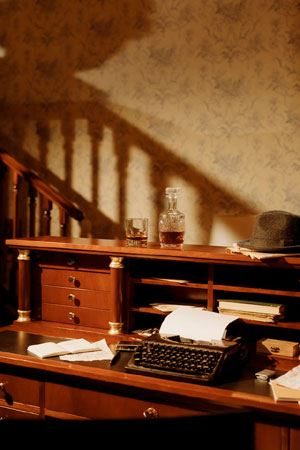
- Lay soundproof foam tiles on your floor to help absorb noise and reduce sound transmission.
- Hang acoustic blankets on your walls as a budget-friendly alternative to acoustic panels. Choose blankets with a high NRC (Noise Reduction Coefficient) rating for maximum effectiveness.
- Place bookshelves filled with books along your walls to create a natural sound barrier. The denser the books, the better the sound absorption.
- Place thick, fluffy blankets over your windows and doors to absorb sound.
- Hang a tapestry on the wall, as the fabric will help absorb sound.
- Put up thick curtains around your workspace to block out noise.
- Large and heavy furniture pieces like bookshelves, couches, and wardrobes can act as sound barriers and absorb noise.
- Make your own noise-cancelling earmuffs using a pair of regular earmuffs and adding noise-blocking material.
- Use a cardboard box and soundproof foam to create a DIY soundproof booth for your workspace.
- Make a noise-blocking headband with foam or other materials that wrap around your ears.
- Create a DIY soundproofing pillow by stuffing a pillow with noise-blocking materials.
- Use egg cartons to create a DIY soundproof wall by gluing them onto a large piece of cardboard.
- Make a soundproofing window screen using plexiglass and sound-absorbing foam.
- Fill a large glass jar with marbles and place it on your desk. The marbles will absorb sound vibrations and reduce noise.
- Place a large vase or jar filled with water on your desk to help absorb sound.
- Make a DIY soundproofing door by attaching foam insulation strips to the bottom and sides of the door.
- Hang a DIY soundproofing curtain made of heavy blankets, comforters, or other noise-blocking fabrics.
- Use cardboard tubes, like those from wrapping paper or paper towels, to create a DIY soundproofing tunnel for your workspace.
- Make a DIY soundproofing panel by covering a wooden board with sound-absorbing material like foam or cork.
- Create a DIY soundproofing rug by gluing foam or other sound-blocking materials to the bottom of a rug.
- Place a small fan on your desk to create a constant hum that can mask external noise.
- Use a DIY noise-blocking hammock chair to create a cocoon of silence around your workspace.
- Hang a string of metal washers on your wall to absorb sound vibrations.
- Use a DIY soundproofing umbrella to create a portable noise-blocking canopy around your workspace.
- Create a DIY soundproofing tabletop by gluing sound-absorbing materials to the underside of your desk.
- Use a DIY soundproofing mask made of foam or other sound-blocking materials to cover your face and ears.
- Make a DIY soundproofing helmet using a motorcycle helmet and foam insulation.
4. Tailoring Soundproofing to Your Needs
Every home office is unique, and the most effective soundproofing solution for you will depend on factors such as room size, layout, and noise sources. Experiment with a combination of the techniques outlined in this section to create a customized soundproofing plan that best suits your needs and budget.
It may not be possible to achieve complete silence in your home office, but with the right soundproofing strategies in place, you can create a tranquil haven that nurtures your creativity and productivity. As you continue to explore the world of noise-blocking solutions, your literary masterpieces will surely flourish.
Mastering the Art of Noise Reduction: A Ranked Guide for Writers
The creative mind thrives in an environment free from distractions. Here's a ranked list of noise-reducing solutions for your home office, starting from the cheapest to the most expensive options. Each method comes with its pros and cons, allowing you to choose the perfect fit for your budget and workspace.
Top 10 Noise-Reduction Tips, Ranked by Cost
1. DIY Ear Plugs-
Pros:
- Inexpensive
- Easy to make using household items (e.g., foam, cotton, or silicone)
-
Cons:
- May not fit comfortably
- Less effective than store-bought earplugs
-
Pros:
- Free
- Helps absorb sound (e.g., place bookshelves along walls)
-
Cons:
- Limited effectiveness
- May require frequent adjustments
-
Pros:
- Inexpensive
- Seals gaps around windows and doors
-
Cons:
- May require regular maintenance
- Not suitable for all types of gaps
-
Pros:
- Low cost
- Makes use of existing items
-
Cons:
- Limited sound absorption
- May not be aesthetically pleasing
-
Pros:
- Moderate cost
- Dual-purpose: blocks noise and light
-
Cons:
- Not as effective as other soundproofing options
- May not match the room's decor
-
Pros:
- Can mask external noise
- May improve concentration
-
Cons:
- May not work for all individuals
- Requires an initial investment for a device or app
-
Pros:
- Portable
- Can listen to music or white noise
-
Cons:
- Varying levels of noise isolation
- May become uncomfortable after extended use
-
Pros:
- Effective at absorbing sound
- Can be DIY'd or purchased
-
Cons:
- Moderate to high cost
- May not suit all room designs
-
Pros:
- Highly effective at blocking noise
- Can listen to music or white noise
-
Cons:
- Expensive
- Bulky and may be uncomfortable for long periods
-
Pros:
- Most effective solution
- Customized for your workspace
-
Cons:
- Expensive
- May require hiring professionals
Each writer's workspace is unique, so experiment with a mix of these solutions to find the perfect noise-blocking balance. Armed with the right strategies, you'll create an oasis of tranquility where your creativity can truly flourish.
My Current Cheap DIY Winning Strategy
- Moldex 6800 Pura Fit Disposable Ear Plug. These are supposed to be the best for noise-cancellation.
- I wear 2 close-knit cashmere hats pulled down over my ears.
- White Noise: Levoit Air HEPA purifier for home allergies and pets hair across the room on high.
- Layered on top of this I play various un-obnoxious nature sound (sans music) Youtube videos on my second monitor at volume 16. At the moment is: Forest Sounds | Woodland Ambience, Bird Song. Hunt around to find ones you like. You have to be careful because some of them will pop in a loud, jarring bird call in unexpected places which distrupts the "white-noise" aspect a lot. With the ear plugs in, I can't hear any of the forest sounds or the white noise but if I turn them off, some other noises from outside the room or outside the windows might get in.
A Midsummer Night's Dream...scape


